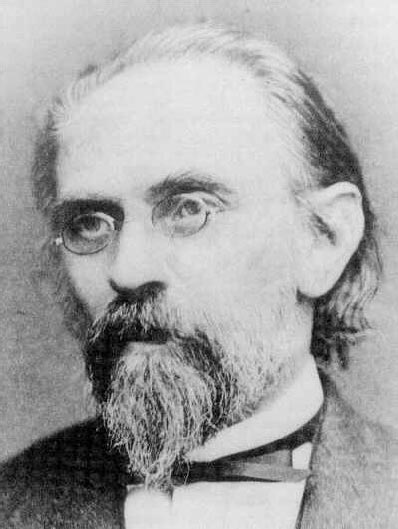- Emil Erlenmeyer
:"For his son sometimes known as Emil Jr., see
Friedrich Gustav Carl Emil Erlenmeyer "Infobox Scientist
name = Richard August Carl Emil Erlenmeyer
box_width = |thumb
|thumb
image_width =
caption = Photograph of Richard August Carl Emil Erlenmeyer
birth_date =June 28 1825
birth_place =Taunusstein ,Germany
death_date = death date and age|1909|1|22|1825|6|28
death_place =Aschaffenburg ,Germany
residence = Germany
nationality = German
ethnicity =
field =Organic chemistry
work_institutions = Munich Polytechnic School
alma_mater =University of Gießen
doctoral_advisor =
doctoral_students =
known_for =Erlenmeyer flask
author_abbrev_bot =
author_abbrev_zoo =
prizes =
religion =
footnotes =Richard August Carl Emil Erlenmeyer (
28 June 1825 –22 January 1909 ) was a Germanchemist , usually known simply as Emil Erlenmeyer. He was born inTaunusstein ,Germany .He spent some years as a
pharmacist after studying medicine.He studied at
Gießen but not underJustus von Liebig - rather he worked with Liebig's student Will and with Fresenius - and atHeidelberg under Friedrich Kekulé. He also associated himself withRobert Bunsen in the study offertilizer s. Erlenmeyer was professor of chemistry at theMunich Polytechnic School from 1868 to 1883. His experimental work included the discovery and synthesis of several organic compounds, e.g.,isobutyric acid (1865); in 1861 he invented the conical flask that bears his name. Among the first to adopt structural formulas based on valence, he proposed the modernnaphthalene formula of twobenzene rings sharing two carbon atoms.In 1880 he formulated the "
Erlenmeyer Rule ": Allalcohol s in which thehydroxyl group is attached directly to a double-bondedcarbon atom becomealdehyde s orketone s.He had to leave academic work in 1883 for health reasons, but continued to act as a consultant. Erlenmeyer died in
Aschaffenburg .References
*cite journal
title = Das Portrait: Emil Erlenmeyer 1825-1909
author = Otto Krätz
journal = Chemie in unserer Zeit
volume = 6
issue = 2
pages = 53–58
year = 1972
url =
doi = 10.1002/ciuz.19720060204
*cite journal
title = Emil Erlenmeyer
author = M. Conrad
journal =Berichte der deutschen chemischen Gesellschaft
volume = 43
issue = 3
pages = 3645–3664
year = 1910
url =
doi = 10.1002/cber.191004303163
*cite journal
title = Nekrolog: Friedr. Gustav Karl Emil Erlenmeyer 1864-1921
author = B. Lepsius
journal =Berichte der deutschen chemischen Gesellschaft (A and B Series)
volume = 54
issue = 5
pages = A107–A113
year = 1921
url =
doi = 10.1002/cber.19210540539
*cite journal
title = Emil Erlenmeyer, 1825–1909
author = Otto N. Witt
journal =Journal of the Chemical Society , Transactions
volume = 99
issue =
pages = 1646–1668
year = 1911
url =
doi = 10.1039/CT9119901646ee also
*
Erlenmeyer flask
Wikimedia Foundation. 2010.
